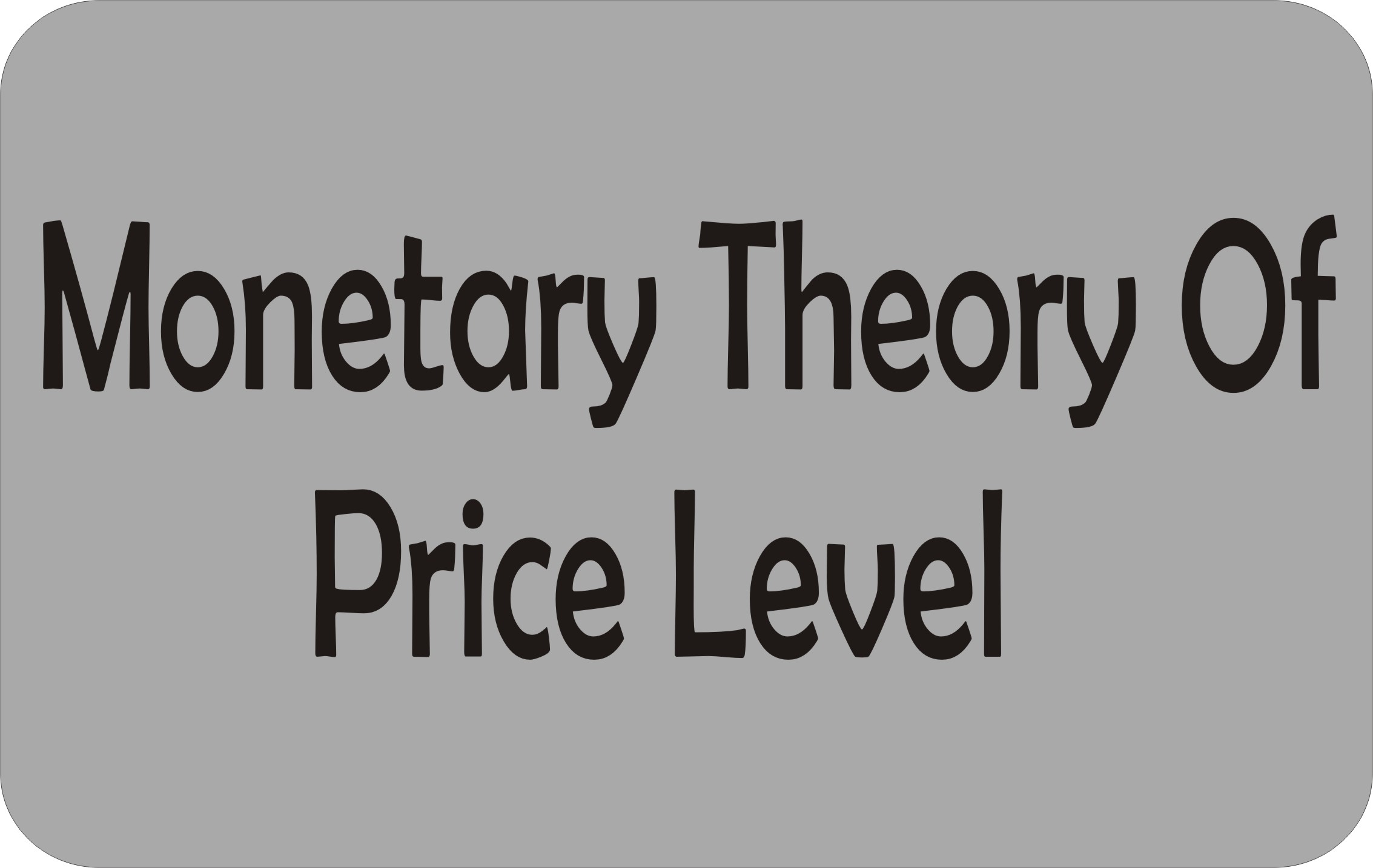Monetary theory Of The Price Level – This postulation states that expect for transactional adjustment period on the previously discussed monetary changes do exerts no influence on real economic variables such as information on the following;
- total output
- employment
- And product mix.
These variables in trying to completely explain Monetary theory Of The Price Level, the argument are determined by basic non monetary condition such as any of the following factors
- Taste
- Technology
- Resource endowment
- And rates of technical substitution between factors resources.
In a bid to understand Monetary theory Of The Price Level, as the quantity of money now follows that monetary changes are neutral in their long run effects on real variables. Briefly put that, money is thought to be merely a veil, obscuring but not affecting the operation of real economic forces. Note that the neutrality postulate only refers to the long run equilibrium condition (You can always get more information these factors.
In the short run however monetary changes can have non neutral effects on real variable such as by altering the wealth distribution pattern of the society (clearly explained on this Monetary theory Of Price Level), which then alters the composition demands and thus the structure of production. Moreover some commodity, goods, items as well as other materials and factor process may adjust more swiftly than other and thereby alter relative prices (in essence, market exchange ratios), consequently relatives quantities of the real variables.
The quantity theory does not deny that money changes may influence the limited resources allocation in the transition period, what it does claim is that these non neutral effects are temporary as was earlier suggested and that they will vanish in the long run equilibrium when the economy has adjusted fully to the monetary change as stipulated by the monetary theories.
The Monetary Theory Of The Price Level Explained
For the neutralist, changes in the quantity of money affects only the price level, this proposition however, does not rule out the possibility of the former being possible. The non monetary variables may also be important determinant of price (P). We can go a step further by adding the above postulate as it concerns these monetary theories, which states that the price level itself tends to be influence predominantly by changes in the quantity of money. The implication is that price level monetary disturbances.
Thus inflation and deflation are largely be seen or considered as the result of the erratic behavior of the money stock rather than that of non monetary causes arising from the real (in essence commodity) sector of the economy.
Quantity theorist readily admits that non monetary influences such as the following factors
- Technological progress and productive change
- Crop failure
- Embargoes and other disruptions in the supplies of food and raw materials
- Monopoly power
Excise argue that such non monetary theory Of Price Level (money) induces changes in the prices of some commodities are often likely to be balanced by opposite changes in the prices of others, leaving average prices level unchanged.
